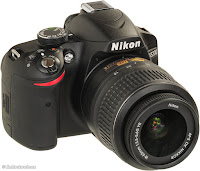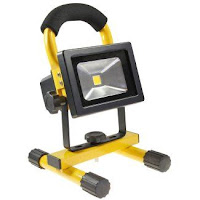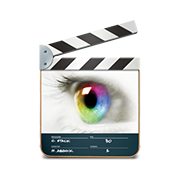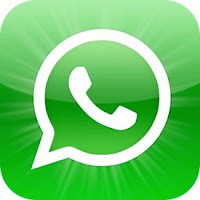How did you use
media technologies in the construction and research, planning and evaluation
stages?
Tripod - I
used a tripod to record in the majority of the music video. This is to keep the
camera steady and makes it easier for me to Pan and adjust the camera to the
way I directed my shots. My tripod also played a very important part in my
masking shots, without the camera being still it would’ve made the masking
almost near impossible to do in after effects.
 Nikon
DS3200 – I used this DSLR camera because I wanted crisp clear images and I
needed a camera that could receive light really well as my music video is majorly
inside a house, with not much natural light. It also made it easier for me records
my time lapse and base tracks, as the recording limit for each video is 17
minutes. It also consists of 24.2 megapixels,
which helps attract the audience, as the images are really clear, and HD.
Nikon
DS3200 – I used this DSLR camera because I wanted crisp clear images and I
needed a camera that could receive light really well as my music video is majorly
inside a house, with not much natural light. It also made it easier for me records
my time lapse and base tracks, as the recording limit for each video is 17
minutes. It also consists of 24.2 megapixels,
which helps attract the audience, as the images are really clear, and HD. LED Work Light – I used he work light every shot except for a few where I sued a
wave projector instead. I used tinted plastic sheets of different colours to
change the lighting. This is shown in some of the lip syncs
LED Work Light – I used he work light every shot except for a few where I sued a
wave projector instead. I used tinted plastic sheets of different colours to
change the lighting. This is shown in some of the lip syncs where I used the
yellow tinted sheet. The lighting help me delivered clear shots, and helped
create an atmosphere that I wanted to provide in the music video.
where I used the
yellow tinted sheet. The lighting help me delivered clear shots, and helped
create an atmosphere that I wanted to provide in the music video.
Wave
Projector – I used the wave projector for the photo-shoot and music video. It
helped set an ambient mood for my music video and provided aid to narrate the
story of my music video.
Samsung
Galaxy S6 Edge – I used my phone to help obtain feedback and also play the song
throughout the music video shoot. It also helped for spontaneous research, and was handy for me to type in the memo pad whenever I wanted to note down ideas, or plan a schedule for my shoot, and keep reminders.
Blogger
– I was familiar with using blogger for my AS coursework so I felt comfortable
using it this year as a platform for my A2 coursework. It’s easy to upload
pictures and embed videos and express all my research and planning on here.
 Final
Cut Express - I was unfamiliar with
final cut as I never used it before but it wasn’t long till I adjusted well to
it. It was very easy to use to help cut shots and edit my video. I used the
chop tool and the snap mode, as well as colour correction. It provided the
tools to help cut to the beat, and lower opacity when I overlayed shots. Final
cut also had a variety of video effects that I had the opportunity to use. I
used the bad TV effect throughout the music video during the lip-syncs where my
artist ha d grey Hollister jumper.
Final
Cut Express - I was unfamiliar with
final cut as I never used it before but it wasn’t long till I adjusted well to
it. It was very easy to use to help cut shots and edit my video. I used the
chop tool and the snap mode, as well as colour correction. It provided the
tools to help cut to the beat, and lower opacity when I overlayed shots. Final
cut also had a variety of video effects that I had the opportunity to use. I
used the bad TV effect throughout the music video during the lip-syncs where my
artist ha d grey Hollister jumper.
Adobe
After Effects - Adobe after effects were
used for all my masking shots. It was easy to use but took a lot of time and
effort and masking wasn’t easy, as it seemed. However adobe after effects
delivered a great platform to edit my masking shots frame by frame.
Photoshop CS4 – I was slightly familiar with other Photoshop softwares such as GIMP, yet I haven’t used such a program for a few years. So I felt like a beginner, but Photoshop was easy and quick to learn. I used it to produce my digipak and magazine advert. It inhibited me with the power to create what I envisioned my digipak and magazine advert to become.
Vimeo
- Vimeo was the platform I used to
display my final version of my music video. Even though Vimeo is a French
platform for movies, after researching for other platforms, this was the only
one that was easily accessible to upload my video with no issues or hassle.
 Whatsapp
– I used Whatsapp to gather feedback from my friends, family and peers. It was
useful as it’s is really popular and almost everyone uses whatsapp to keep in
touch with their family and friends. I was familiar with the software; ad gave
me easy access to reach people directly to gain feedback as soon as possible.
Whatsapp
– I used Whatsapp to gather feedback from my friends, family and peers. It was
useful as it’s is really popular and almost everyone uses whatsapp to keep in
touch with their family and friends. I was familiar with the software; ad gave
me easy access to reach people directly to gain feedback as soon as possible. Google
Chrome – This was the Internet explorer and search engine I used to browse the
web and find my research. I’m really familiar with the web surfer as I use it
myself. It gave me many advantages including being able to access my blogger
with ease as it’s already connected to my Google account. With the link to my Google
account I could also access my YouTube Channel.
Google
Chrome – This was the Internet explorer and search engine I used to browse the
web and find my research. I’m really familiar with the web surfer as I use it
myself. It gave me many advantages including being able to access my blogger
with ease as it’s already connected to my Google account. With the link to my Google
account I could also access my YouTube Channel.
Audacity
– This was the software used to convert my explicit version of the song into a
clean version that could be used in the music video. Other audio softwares were
too hard to understand how to use, and this software was widely known and gave
me the opportunity to look for YouTube tutorials to achieve the sound I wanted.
I tried different methods of making a radio edit version of the song; I used
the reverse technique, and replacing the explicit language with sounds. However
after trial and error, I felt that these techniques didn’t aid me at all, as I
just caused a distraction from my music video. Then I found a way to just mute
the vocals at the points where explicit language was used without losing the
instrumental sound. This took me a while but at the end it was worth it, as it
gave me the sound I wanted, and it suited what I wanted to portray in my music
video.





































